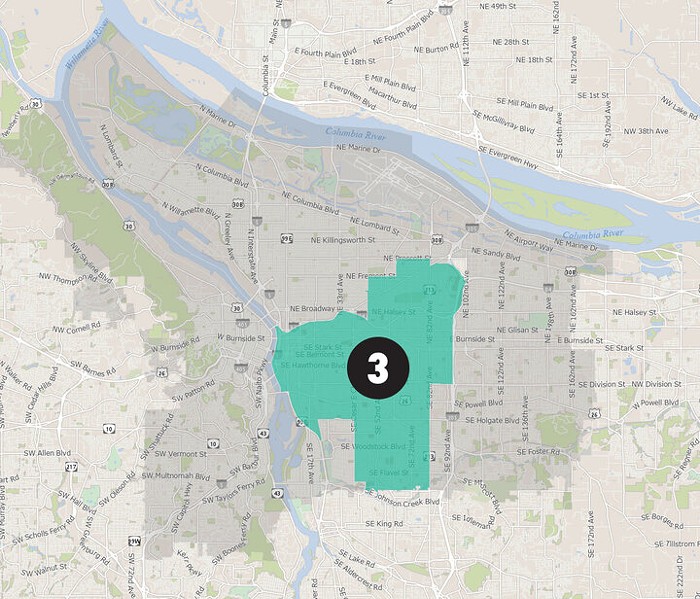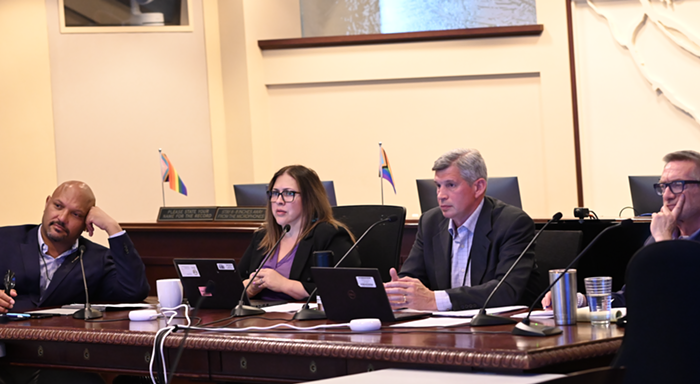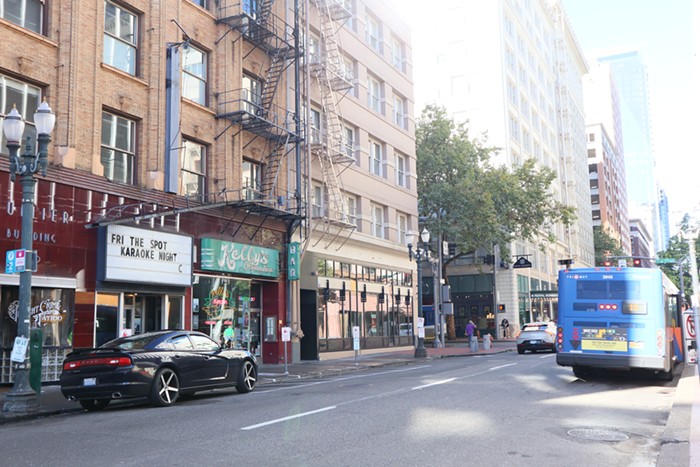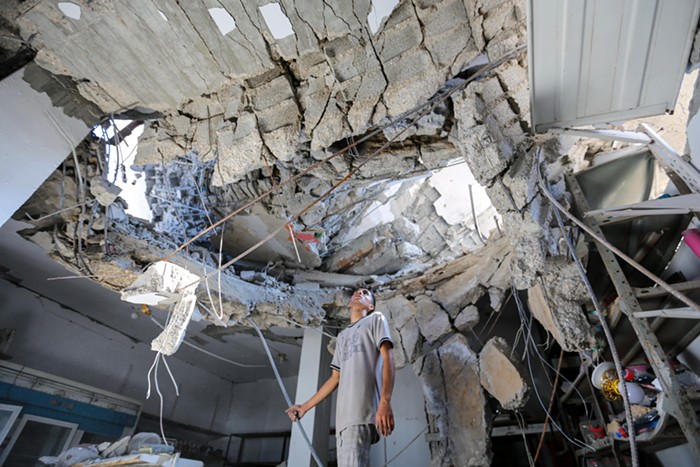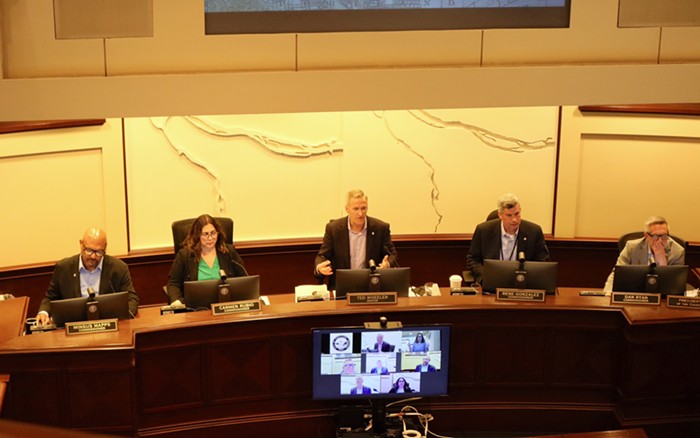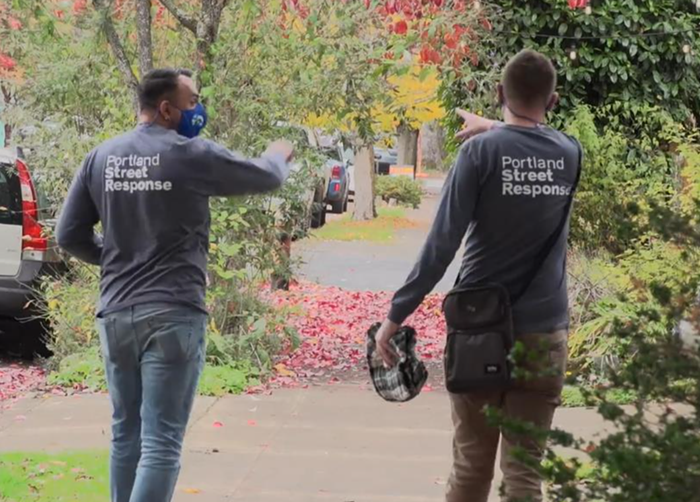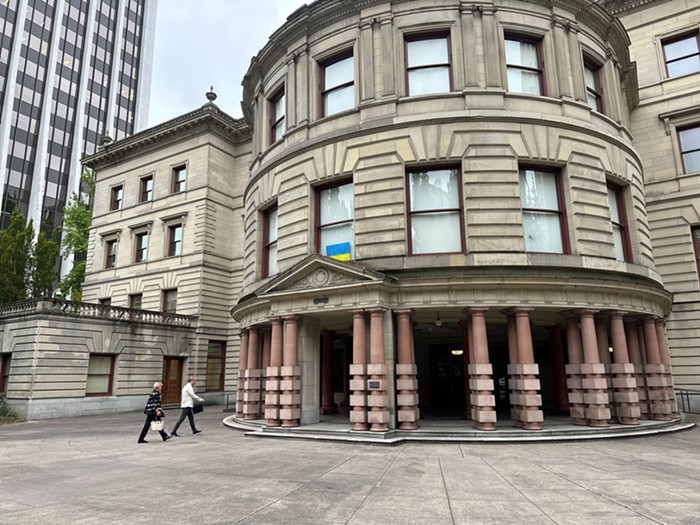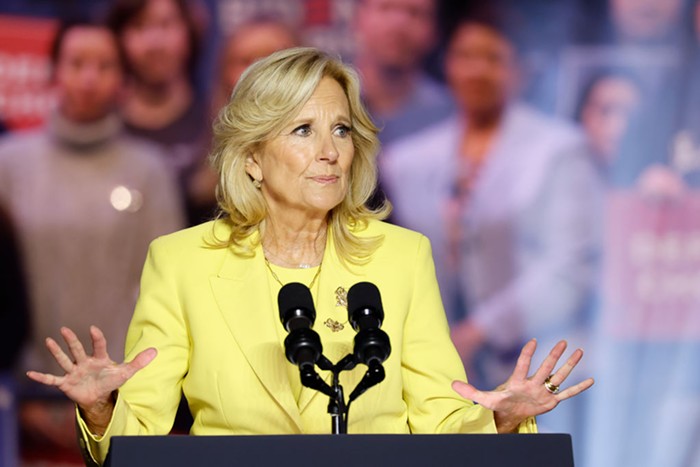This is truly adorable. The entire city council is holding a work session this afternoon, on the Columbia River Crossing project.
This, despite the fact that they already sent a letter to the CRC outlining what they want in a new I-5 bridge, and this despite the fact that the momentum around a 12-lane sprawl-enabling bridge for Vancouver commuters seems unstoppable. Meanwhile, no one on the Portland City Council is speaking up to demand that any new bridge set a 21st century standard for cleaner air, a significant reduction in CO2 emissions, and a reduction in vehicle miles traveled.
Instead, we have a council draft resolution with some watered down recommendations, like "the CRC project should contribute to a reduction of vehicle miles traveled (VMT) per capita in the bi-state metropolitan area." Ooo, tough condition guys. How about demanding VMT on the bridge itself is reduced by 30 percent? Or taking a huge step back and asking whether this project is really a $4.2 billion priority for the region? Why not add transit and make minor safety improvements, then spend a few billion more equitably throughout the region on transportation choices?
Sorry, this project makes my blood boil. And watching my elected officials essentially sit there as the train speeds out of the station is infuriating.
To their credit, Commissioners Randy Leonard and Sam Adams and Mayor Tom Potter are drilling project staffer Tom Markgraf on details of the city's authority on the project. Letters signed by both governors say the cities of Vancouver and Portland are advisory, but the city wants more direct oversight. So what's the deal, Leonard asked?
"To finally send the project through to the federal government, everybody has to agree to it," says Tom Markgraf of the CRC staff. Ten minutes later, the council doesn't quite believe it.
"The word that struck me was 'advising,'" says Potter.
"The problem is that projects that are this big have a momentum of their own," says Adams. "And we want to make sure we have a good handle on it," so it doesn't get away from us.
More after the cut.
"There will be no local funding from the city of Portland," Adams says, asking if that's true.
That's Markgraf's "understanding."
"Wouldn't it be nice to know that?" Potter says.
As a project "of national significance," Adams wants reassurance that federal funding toward the CRC wouldn't jeopardize future federal funding for other projects in the region.
He adds, in regards to signing off on the locally preferred 12-lane option: "I'm not viewing this as the ultimate yes... This is saying yes to this phase of the project." True? Markgraf says yes.
"What's the current best number we have on this project?" asks Commissioner Nick Fish. Another CRC staffer says $3.4 to 3.7 billion...
"On these kinds of projects, inevitably as differences between the estimate and the actual costs [emerge], the design is dumbed down," Adams points out. He wants to make sure the "look of the bridge and the functionality of the bridge" are adhered to, moving forward.
Potter asks if the CRC staff has a diagram or timeline on what happens after the council's July 9 vote—what are the future decision steps, and when's the city's last say on the project? The staff doesn't have that—it's in the works, apparently.
Potter suggests they get on it, so public bodies like the council know "at what point do we relinquish out authority, and proceed to the next phase, construction," Potter.
Now the CRC staff has taken a seat, and Justin Yuen of the city's Sustainable Development Commission is articulating the group's concerns about the project—why weren't repair options studied, or a phased option that explores tolling and transit first, before adding lanes?
"Our concern is we may not have the right bridge for the right time here," says Catherine Ciarlo of the city's Planning Commission.
Ciarlo is also pushing for an "independent analysis of greenhouse gas emissions" around the project. "When you look at the kind of reductions the governor has said we need to make, you're really looking at reducing vehicle miles traveled," not just reducing congestion. The CRC project began in another era, one in which greenhouse gas emissions weren't heavily considered.
It's "analysis really driven by need, rather than a vision for a specific project," she says, adding that the council should "condition your approval on the creation of an oversight committee, not an advisory committee... we need to see a way for the local jurisdictions to make sure that our concerns are addressed."
What's frightening about this meeting is that the conventional wisdom I've been hearing since I started looking into this project—that any one of the six jurisdictions involved in this project, like the cities, the two transit agencies, and the two regional planning agencies, have veto power over the project—is false. It's becoming clear that those agencies can put up a fight, but they may not really have veto power.
Adams is talking about the idea of an independent review: Will the "auxiliary lanes" that bring the bridge from six to 12 lanes really enhance safety, or will they contribute to "car abuse," as Adams put it, and have a huge impact on greenhouse gas emissions? An independent review is critical, he believes.
Ciarlo thinks it's a "critically important issue" that if there's a gas tax increase to pay for the project, that the money isn't coming out of the city's pot—we need our own share of gas tax increases to pay for local projects—to pay for the bridge.
The council is again asking about their ultimate authority over the project. Leonard is outlining his criteria for the project: He's voting for it if it has light rail, adequate bike facilities, and adequate pedestrian facilities. (Way to go out on a limb Randy! Those are great criteria for a project happening 10 years ago.) What happens if the final project changes, and no longer includes those? It's entirely unclear...
Meanwhile, Fish is hyper focused on minutiae that's far out in the future: If light rail goes to Vancouver, will that be the same fare as a trip from downtown to the Expo center? Will there be opportunities for women and minority owned businesses for construction?
The next step is the council meeting on July 9, where the council will vote on a resolution giving the initial okay on a 12-lane bridge. Oh, and they'll apparently get public input.
